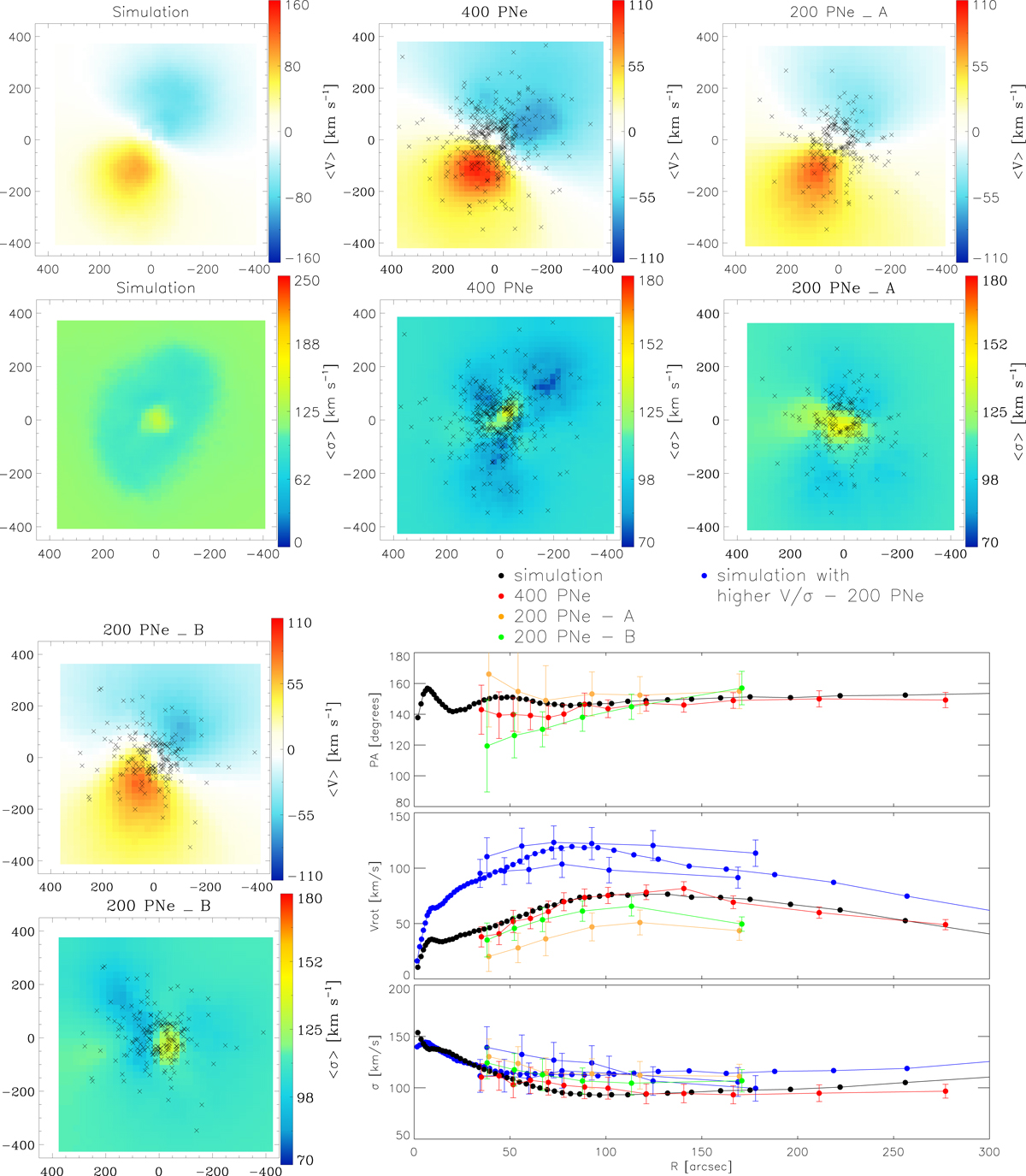Fig. A.1.

Smoothed velocity and velocity dispersion fields in the ePN.S field of view for a simulated ETG, traced by 10 000 particles, 400, and 200 stars after the convolution with a completeness function. For the 200 particle case, we show two typical statistical realizations (A and B) of the extracted sample, to illustrate the effects of the limited statistics on the smoothed quantities. The global features of the simulation are preserved in the different fields but, as expected, the spatial and velocity resolution of the local gradients is downgraded when the number of tracers decreases. The lower right panels display the fitted kinematic position angle PA, the rotation velocity Vrot, and the azimuthally averaged velocity dispersion σ in circular radial bins as function of radius. It is evident that the radial gradients are less resolved with fewer tracers, and that the amplitude of rotation for the case with 200 stars is oversmoothed. This happens because the kernel width is larger than the real spatial scale of the velocity gradients due to the sparse distribution of the tracers. The blue full circles show a simulation with higher V/σ ratio and two of its typical statistical realizations sampled by 200 objects to illustrate how of the accuracy of the reconstructed velocity amplitudes depends on the statistical noise. Errors for the kinematic profiles are determined from Monte Carlo simulations using the smoothed velocity and velocity dispersion fields as described in Sect. 3.2.2.
Current usage metrics show cumulative count of Article Views (full-text article views including HTML views, PDF and ePub downloads, according to the available data) and Abstracts Views on Vision4Press platform.
Data correspond to usage on the plateform after 2015. The current usage metrics is available 48-96 hours after online publication and is updated daily on week days.
Initial download of the metrics may take a while.


